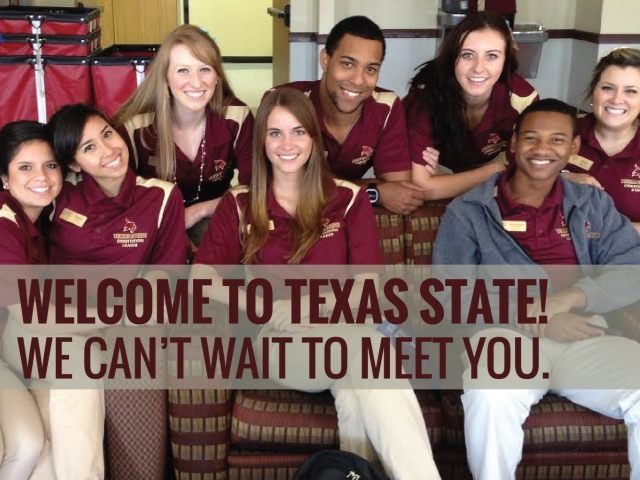Imagine no college tuition or loans — at least for one year, the freshman year. The Texas State University System (TSUS) boasts they will do just that in 2016, rolling out the Freshman Year for Free program, except it is not totally free, nor is it actually for everyone.
Texas State University System (TSUS) announced last Thursday that it teamed up with non-profit Modern States Education Alliance, with college courses developed through edX, a Massive Open Online Course (MOOC) platform created by Harvard University and the Massachusetts Institute of Technology (MIT) that offers over 30 free virtual classes. Students only pay for the end-of-course credit bearing exams which cost around $90 per class.
These popular digital courses have not traditionally translated into college credits for many students. However, TSUS says that those offered through edX will by preparing students to take Advanced Placement (AP) or College Level Examination Program (CLEP) tests offered by the College Board after completing a class. When a student scores “3” or better, or passes the CLEP test, those credits are applied towards the four years of college.
Freshman Year for Free specifically targets “non-traditional” students – older, working adults who want to go back to college. Modern States maintains its program is open to all people regardless of age, location, family income or other factors. It provides a critical “road back” for students unable to meet the traditional path of the US college system.
Students wishing to participate in the TSUS-Modern States program can select freshman-level courses from the Modern States catalog that apply toward degrees at any of the eight TSUS campuses.
TSUS is the first Texas public university system to partner with Modern States. Other major colleges and university systems participate such as the State University of New York; the Ohio Department of Higher Education; the Pennsylvania State System of Higher Education; the Tennessee Board of Regents; Arizona State University; Colorado State University-Global; and Rice University. Together, these university systems serve more than 500,000 students.
“As our student population becomes older and more diverse, the pathway to a college degree varies greatly from student to student,” said TSUS Chancellor Brian McCall. “Our goal in partnering with Modern States’ ‘Freshman Year For Free’ program is to provide students with another option to earn their degree on a timeline and budget that works for them.”
The Texas State University System has a large number of non-traditional students, according to WFAA-8 (ABC Dallas). More than 70 percent of the system’s students also work. Older students with kids and full-time jobs might benefit the most, said McCall.
“We want as many tools for students as we can give,” he said about the student market that may not have time to take four years out of their lives to attend school. “We thought this was a particularly good one for older, busy, driven and disciplined students,” he added.
“We are proud to be partners with the Texas State University System and its 83,000 students, in order to make college more available and affordable for everyone,” said Steven Klinsky, founder and chairman of the Modern States Education Alliance. “No one should be shut out of education after high school because of tuition cost or lack of access.”
Klinsky also funded and launched the alliance in December 2014. Inspired by President Obama’s push for two free years of community college, the CEO of $15 billion hedge fund New Mountain Capital, kicked in $1 million to edX. Previously, this edu-reformer created education centers for low-income children in New York, a charter school network, and Victory Education Partners, which helps poor students in four states (NY, IL, DE, MD), according to the Center for Education Reform (CER) in 2011. CER president Jeanne Allen sits on the Modern States leadership team.
Wired Magazine called Klinsky’s concept a “clever workaround” to college that uses the very courses that prepare high school students for the exams that universities already grant credits, Freshman Year for Free would help students chop off an entire year’s worth of enrollment, without asking these institutes of higher learning to overhaul their business models.
“It’s not meant to attack the traditional system,” Klinsky told Wired, noting that he expects most students will be people who either never went to college or who dropped out and want to go back. “What we’re trying to do is have an on-ramp that helps you with the initial costs.”
He believes that rising college costs and explosive student loan debt block students from achieving the American Dream. In 2012, he challenged the Obama administration to support an edX-style program.
Modern States plans to add tutoring, mentoring, and student counseling services free-of-charge to students and to expand the class catalog. They also seek broader recognition, accreditation, and transferability for these courses. They hope to help students in the program transition to an on-campus four-year college experience. Although edX allows students to jumpstart their higher education, Modern States still called traditional college preferable to even the best online courses.
Klinsky claims he has no interest in making money on this venture. He only wants to move the free education movement forward to make college more attainable for all those who want to further their education.
Follow Merrill Hope on Twitter @OutOfTheBoxMom.

COMMENTS
Please let us know if you're having issues with commenting.